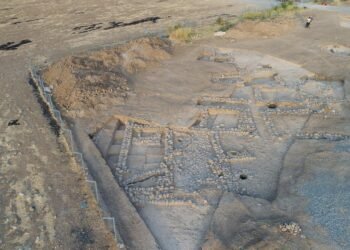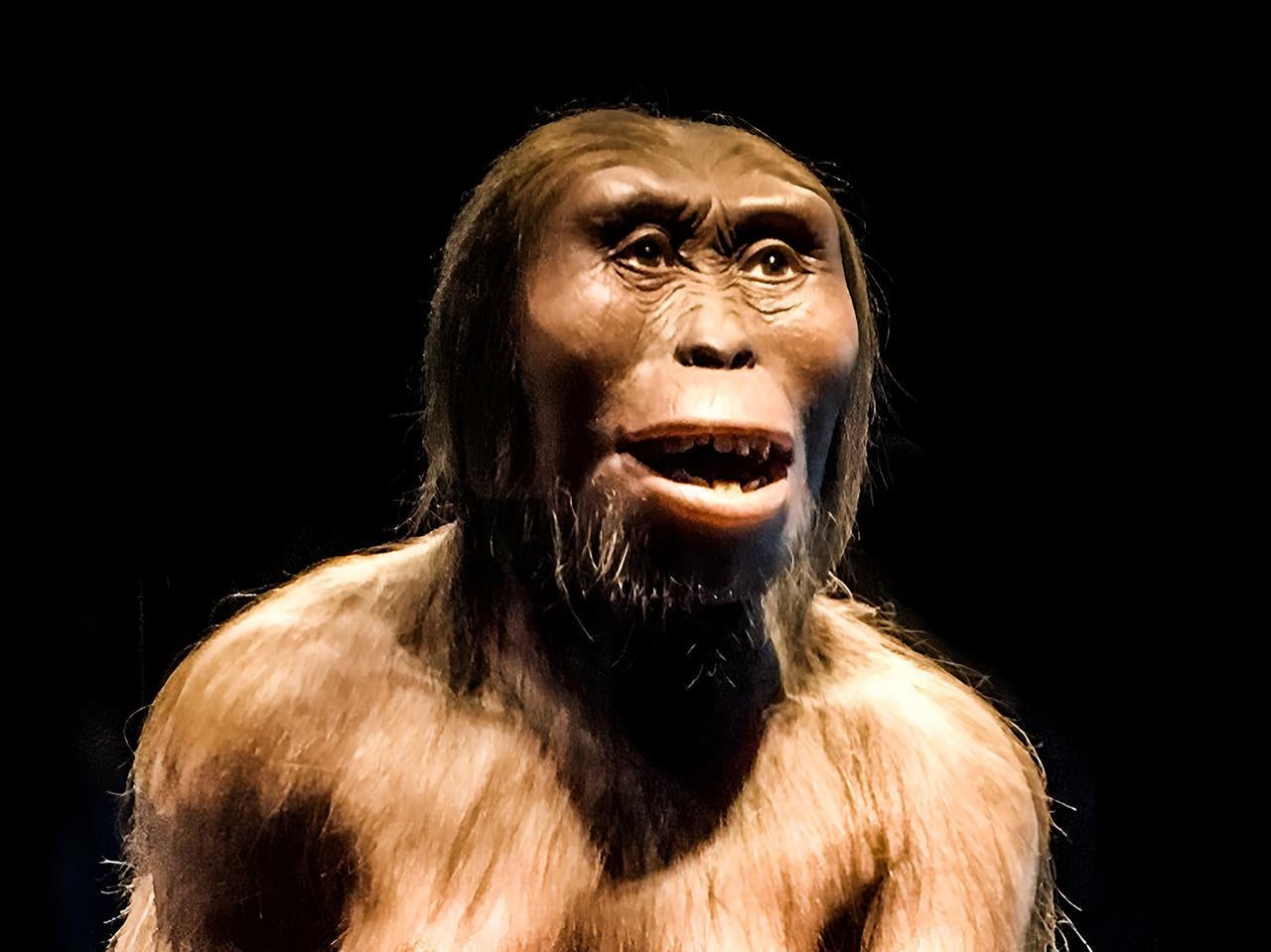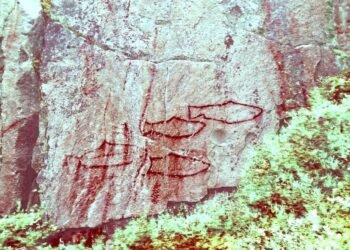In a collaborative effort spanning four years, archaeologists from Greece and Switzerland have unearthed a wealth of information about the Artemis Amarynthos sanctuary on the Greek island of Euboea.

The sanctuary, dedicated to Artemis, the goddess of the hunt, wild animals, and nature, served as a center of worship during the Amarysia festival procession in Northern Greece.
The focal point of the excavation is a temple dating back to the 7th century BCE, with an unexpected apsidal floor plan measuring an impressive 34 meters (111.5 feet) in length. This size, considered “perfect,” aligns with other monuments from the same era. The temple, a site of annual pilgrimage from Eretria, was not only a place of worship but also witnessed elaborate animal sacrificial rites.
Archaeologists discovered hearths and altars within the temple where animals were ceremoniously sacrificed in dedication to Artemis. Traditional animal sacrifice procedures were followed, involving a procession to the altar, slaughter, butchering, and the burning of specific parts as an offering to the goddess. Layers of ash and calcined animal bones serve as poignant evidence of these ancient rituals.
Among the findings within the temple are numerous offerings, including vases, weapons, jewelry, and a meticulously chiseled ivory head with Egyptian features. Credit: Swiss School of Archaeology in GreeceAmong the findings within the temple are numerous offerings, including vases, weapons, jewelry, and a meticulously chiseled ivory head with Egyptian features. The discovery of this ivory head, initially unrecognizable but meticulously restored, provides insights into the diverse cultural influences present at the sanctuary.
Evidence suggests that in the 6th century BCE, the temple suffered partial destruction by fire, prompting temporary restoration with mud-brick walls. However, by the end of the century, the structure was entirely demolished to make way for a new building, indicating shifts in religious landscapes over time.
Beyond the temple, deep trial trenches revealed remnants of a building from the 9th or 8th century BCE, along with bronze animal figurines and a terracotta bull’s head from the late Bronze Age. These findings suggest the site’s ceremonial significance dating back to prehistoric times, reaffirming the roots of the Artemis cult at Amarynthos.
The Artemis Amarynthos sanctuary, situated at the base of a hill occupied since the Bronze Age, boasts imposing walls from the 3rd millennium BCE, possibly part of a fortification system. The site’s significance in the Mycenaean period is supported by records from an ancient palace mentioning the town of Amarynthos.
The ongoing excavation extends beyond the temple, with an extensive survey underway in the Amarynthos region. This survey aims to understand the sanctuary’s integration into the ancient landscape, studying elements such as the natural environment, settlement distribution, agricultural areas, cemeteries, quarries, and communication networks, including a “Sacred Way” linking the sanctuary to the ancient city of Eretria.
Artemis, a central figure in Greek mythology, is revered as the goddess of the hunt, wilderness, and wild animals. The Artemis Amarysia sanctuary represents a specific cult site dedicated to her worship, reflecting her significant role in various myths and stories, including the Trojan War.






















